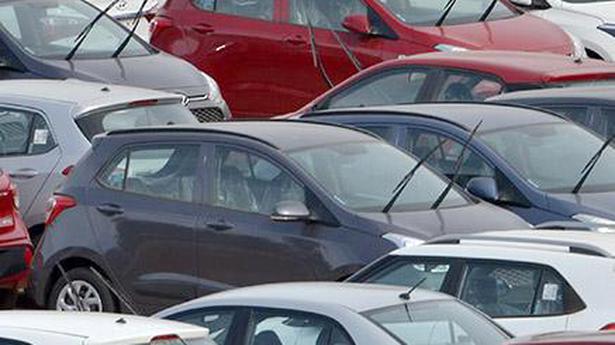
Passenger vehicle sales rise on improved chip supply
The Hindu
‘Industry marks highest monthly sales ever’
Improvement in semiconductor supplies helped automakers, including Maruti Suzuki, Hyundai, Tata Motors and Mahindra & Mahindra, report single to high double-digit growth on Monday in their domestic passenger vehicles sales in July.
Other manufacturers, Kia India, Toyota Kirloskar Motor (TKM), Honda Cars India, Skoda Auto India, also reported robust growth in their domestic passenger vehicle sales with the auto industry estimated to have achieved the highest-ever passenger vehicle wholesales in July this year.
Maruti Suzuki India said its domestic passenger vehicle sales rose 6.82% last month to 1,42,850 units.
"The shortage of electronic components had a minor impact on the production of vehicles, mainly in domestic models," the company said in a statement.
The company's sales were driven mainly by compact cars, including Baleno, Celerio, Dzire, Ignis, Swift, Tour S, and WagonR, which rose to 84,818 units in July 2022 from 70,268 units a year earlier.
Sales of mini cars -- the Alto and the S-Presso -- grew to 20,333 units from 19,685 units. However, sales of utility vehicles -- including Brezza, Ertiga, S-Cross and XL6 -- declined to 23,272 units from 32,272 units.
"Overall industry sales stood at over 3.42 lakh units last month as compared with 2.94 lakh units in July 2021. This is the highest wholesale figure we have ever seen in the industry," MSI India senior director (Marketing and Sales) Shashank Srivastava told PTI.

The Union Budget unveiled on February 1, 2025, has come at a time of unprecedented global uncertainty and a flagging domestic economy. The real GDP growth is estimated at 6.4% for 2024-25 and between 6.3-6.8% for 2025-26, a far cry from >8 percent growth required annually to make India a developed nation by 2047. While much attention has been devoted to the demand stimulus through income tax cuts, not enough is said about the proposed reforms in urban development, tariff rationalisation, and regulatory simplification aimed at making Indian cities and corporates more competitive. Since the majority of economic activity is located in cities (urban areas account for ~55% of GDP) and produced by large corporates (~40% of the national output and 55% of India’s exports), the above-mentioned reforms have a pivotal role in improving India’s trend growth rate. Below we unpack each reform.












